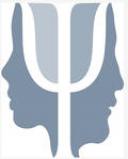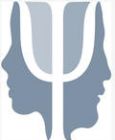Education
Lessons Learned: Forming Professional Learning Communities
Professional learning communities challenge existing norms in schools.
Posted August 28, 2018 Reviewed by Ekua Hagan
Post by Julianne Turner, Ph.D. Dr. Turner has worked with teachers in several professional development projects to support increased student engagement through teacher instruction. She is Professor Emerita from the psychology department at the University of Notre Dame.
The most interesting and rewarding part of my research career has been working with teachers to understand how we can better support students in learning. This work has been both challenging and exhilarating. Through it, I have learned how important it is for researchers and teachers to talk to each other and to learn from each other. As educational psychologists who study learning and instruction, we have knowledge that is relevant to teachers’ daily problems and experiences. At the same time, we need to learn about teachers’ specific beliefs and norms in order to successfully work with them.
I would like to illustrate this learning using some examples from a three-year professional development project I conducted in one middle school. The principal and a leadership group invited us to work with all the teachers to increase student engagement in learning. During the first year of the project, we introduced instructional strategies that could support student engagement (Turner et al., 2014). In the second and third years of the project, we supported teacher leaders as they led content area colleagues in professional learning communities (PLCs). The purpose of the PLCs was to give teachers ownership of the strategies we had introduced and opportunities to discuss and try them out in the classroom (Turner et al., 2018). We believed that the norms of PLCs would support these goals. In this post, I will discuss the lessons I learned and how they might help other educational psychologists to work with teachers, particularly in developing PLCs as a way to foster instructional change.
PLCs aim to promote and sustain the learning of all teachers in the school community through collaboration with the shared purpose of improving student learning. PLCs aim to do this by adopting norms of collaboration, reflective discourse, shared values, a focus on student learning and making practice public. Although we believed that these processes would facilitate teacher learning, we quickly learned that these new norms conflicted with established norms that the teachers observed and valued.
Challenges in Forming PLCs
What, then, were our challenges? Many of the challenges involved negotiating between the existing norms of teaching at the school—egalitarianism, autonomous decision-making, and privacy—and the aspirational norms of the PLCs (Lortie, 1975). Despite the fact that we were conducting professional development, we suggested that teachers should be the leaders of their content-area PLCs. Our role was as observers and coaches for the teacher leaders. We believed that teachers were the experts on their students and community and would be the best to decide if and how to adapt the professional development to their situation. However, some teachers perceived the notion of teacher leaders as a violation of the norm of egalitarianism, elevating them undeservedly above their peers. Two leaders were very sensitive to this violation of egalitarianism and feared the loss of collegiality with peers. Therefore, instead of leading colleagues to reflect on why students did not engage, which may have implicated some teacher beliefs and instructional practices, these leaders ceded their role to colleagues who turned the conversation to the “problem” of students and families rather than on potential solutions which the PD had presented in the first year. Two other leaders, however, succeeded in encouraging peer participation by pointing out the value of time together to discuss issues of practice, which is rare in most schools. They also asked colleagues ahead of meetings to present strategies they had used and to reflect on their efficacy, thus spreading leadership opportunities among all participants and supporting egalitarianism. This approach showed respect for colleagues as professionals and enabled others to learn from or offer support to them.
Another challenge was reconciling PLC norms, as defined in the professional literature, and teachers’ tacit notions of them. Both the PLC concepts of collaboration (joint decision-making) and reflection (deep understanding of how instruction can improve or inhibit student learning and engagement) were different from teachers’ experience. Teachers thought of collaboration as collegiality and reflection as judging whether a lesson “worked” or not. When one of the leaders attempted to collaborate with colleagues in revising a lesson she had taught, teachers were at first reluctant to provide feedback because this joint decision-making violated the norms of autonomous decision-making that teachers valued and practiced. Several leaders emphasized the promise of reflection for improving instruction but had to guide colleagues to a deeper examination of practice in general and to consider which aspects of instruction could be improved to make the lesson more successful. For some teachers, this was uncomfortable, possibly because it threatened to violate the norm of privacy by encouraging teachers to reveal instructional practices and perceived “failures.”
A third challenge was justifying the potential of some of the PLC norms. One leader commented that teachers would be amenable to establishing norms like collaboration and reflection (at least as the teachers understood them), but the PLC norm of making practice public would be “risky.” Because of the tradition of privacy and egalitarianism, teachers believed that they had no right to offer advice on instruction to their peers. The assumption was that even though teachers might teach differently, they were all equally competent. Teachers also feared that opening practice to scrutiny would lead to a (negative) evaluation by peers. As part of our research data, we videotaped leaders’ instruction and made the tapes available to the leaders to use in the PLCs, but they were never used. Because traditionally, teachers had only “opened” their classrooms for required administrator evaluations, they viewed visits by others as evaluation rather than feedback. They needed more time to experiment with the potential value of making practice public before they could allay fears of negative evaluation. These challenges illustrate that effective PLCs are difficult to implement because they demand skills, like leadership, that few teachers have had the opportunity to learn, and by definition, they challenge the status quo of established norms.
Lessons Learned
What did we learn? We learned that one cannot necessarily implement new practices like PLCs without understanding how they might conflict with existing norms. This entailed conceptual change for all participants. We came to see that understanding some teachers’ resistance helped us devise strategies that could help bridge the existing and the new norms. One strategy was discovering which teachers were the most suited for leadership roles.
The successful leaders promoted interdependence (vs. independence) and fostered engagement in joint work rather than preserving autonomy (Little, 1990). They did so by serving as boundary crossers. These teacher leaders appreciated both the norms of the PLC and traditional norms and worked to make them compatible. On the one hand, they actively pursued conversations about reflection and practice with their colleagues. On the other hand, they made sure to create a safe space where teachers could talk and learn from each other, honoring valued tradition. Boundary crossers were more likely to seek us out for conversations, showed more interest in and application of ideas, and were better instructors (based on observations; Turner et al., 2014). They also acknowledged the need for instructional improvement, thus putting professional development ahead of maintaining traditional norms.
We found that teachers who had served in school leadership roles like assistant principal did not necessarily make good leaders of the PLCs, possibly because the expectations for the roles are different. By observing the leaders in their roles during the first year, we were able to discern those who were unwilling to challenge the status quo or unable to plan effectively and we worked to change leaders for that group during the second year. When leaders in less effective PLCs changed, those PLCs became much more effective.
Finally, we learned that extended time is essential for both educational psychologists and teachers to come to know and understand each other. We needed to build trust with teachers. They needed time to develop an understanding of new ideas and to try unfamiliar processes. We needed to develop an understanding of teachers’ priorities and beliefs about instruction, many of which differed from the tenets of our professional development. But in listening to those who dissented, we developed a more contextualized understanding of some of the concepts—like challenge, effort and student autonomy—that undergirded our professional development. Over time we could propose changes more in tune with teachers’ thinking and preferences. During the second year of the PLCs, leaders, and teachers made more progress than in the first, because ideas and processes were more familiar and leaders were better at evaluating which strategies worked with their peers. It was only through years of listening and talking that we could see the mutual influence of our collaboration.
PLCs are quite in vogue today. They vary greatly in goals and implementation. Whatever their form, though, PLCs will challenge some dearly held norms of the schools they enter. Although some teachers remained reluctant participants, others found that the experience of PLCs offered new validation of their roles as teachers and experts. I would not contend that we met all the goals of the PLC, but teachers made progress in collaboration and reflection along with deeper analysis of student learning. Even these accomplishments are notable, given the challenge of introducing norms whose goal is to change the status quo. Those of us who work in schools want to promote change. This is a challenging endeavor because change is slow; organizations tend to resist rather than embrace change. But I have found this work very rewarding, both because of what I learned and what our teacher colleagues learned. I hope more educational psychologists venture into schools and begin listening and learning. This is one way to develop mutual respect and understanding, which is essential to any change.
This post is part of a special series curated by APA Division 15 President E. Michael Nussbaum. The series, centered around his presidential theme of "Evidence-Based Change through Psychology, Policy, Professional Learning, and Participatory Practice," is designed to help education researchers extend the impact of their work. Those interested can learn more about this theme on page 7 of Division 15's 2017 Summer Newsletter.
References
Little, J. W. (1990). The persistence of privacy: Autonomy and initiative in teachers’ professional relations. Teachers College Record, 91, 509–536.
Lortie, D. (1975). Schoolteacher: A sociological study. Chicago, IL: University of Chicago Press.
Turner, J. C., Christensen, A., Kackar-Cam, H. Z., Fulmer, S. M., & Trucano, M. (2018). The development of professional learning communities and their teacher leaders: An activity systems analysis. Journal of the Learning Sciences, 27, 49-88.
Turner, J. C., Christensen, A., Kackar-Cam, H., Trucano, M., & Fulmer, S. (2014). Enhancing students’ engagement: Report of a three-year intervention with middle school teachers. American Educational Research Journal, 51, 1195-1226.




